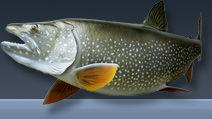Random Tutorials
A random selection of tutorials
AutoCAD 2010: Getting Ready for 3D
This video tutorial describes how to prepare the AutoCAD 2010 user interface (UI) ready for a 3D drawing project. Running time: 2min 23sec
Popularity: 30.03 visits per day | Last visit: Today | Total visits: 177,777
Object Snap
A tutorial giving an overview of all the AutoCAD object snaps (osnaps) with some worked examples. The tutorial also covers the use of temporary tracking points and object snap tracking.
Popularity: 94.12 visits per day | Last visit: Today | Total visits: 672,482
AutoCAD 2010: Ground Shadows
This tutorial explains how to turn ground shadows on and how they help in defining the relationship between 3D objects and the ground plane. Running time: 1min 55sec
Popularity: 7.84 visits per day | Last visit: Today | Total visits: 46,210
Stage 11: Rendering
In this final stage of the project, views created with the Quickscape View Manager are rendered using Supersampling for best quality.
Popularity: 3.93 visits per day | Last visit: Today | Total visits: 25,393
AutoCAD 2010: The 3D Primitives
This tutorial follows on from the Getting ready for 3D tutorial and describes how each of the 3D primitives work. Running time: 15min 10sec
Popularity: 15.63 visits per day | Last visit: Today | Total visits: 92,379
Standard none mapped materials
Standard none mapped materials are suitable for paint, plastics, metal and basic glass type objects. By choosing the correct shader, the most suitable parameters can be used to create the most appropriate effects. This tutorial shows you how.
Popularity: 3.81 visits per day | Last visit: Today | Total visits: 24,649
Masterplan Exercise
This exercise can be used to practice your basic drafting skills.
Popularity: 32.72 visits per day | Last visit: Today | Total visits: 233,795
Optimisation and Workflow
This tutorial discusses the various ways you can make your modelling work more efficient.
Popularity: 5.19 visits per day | Last visit: Today | Total visits: 33,617
Site Layout Exercise 1
This exercise is designed to help you test out your basic AutoCAD skills. You'll need an understanding of the Draw and Modify tools and how to use co-ordinates.
Popularity: 52.65 visits per day | Last visit: Today | Total visits: 376,169
Loft Mapping
This tutorial follows on from the simple Loft tutorial in Options for Creating Objects and demonstrates how to map a material along a lofted object.
Popularity: 10.34 visits per day | Last visit: Today | Total visits: 66,879
Local Navigation
Featured Tutorial
This tutorial introduces the ViewCube and describes how it can be used for effectively navigating your 3D drawings. Running time: 6min 13sec
Sponsored Links
The Basics
- Dual Dimensions in a Dim…
- UCSICON Options
- "Best of" Basics: Irreg…
- Tool Palette Basics
- Original Dimension Value
- Possible Solutions to th…
- Avoid Using 'Standard' i…
- Shorten the Plot Scales…
- Update the Source File B…
- User Increment Angles fo…
- Drawing Information
- 'Sign Language'
- Rotate with the Copy Opt…
- Use the INSERT Osnap on…
- To or From the Current L…




